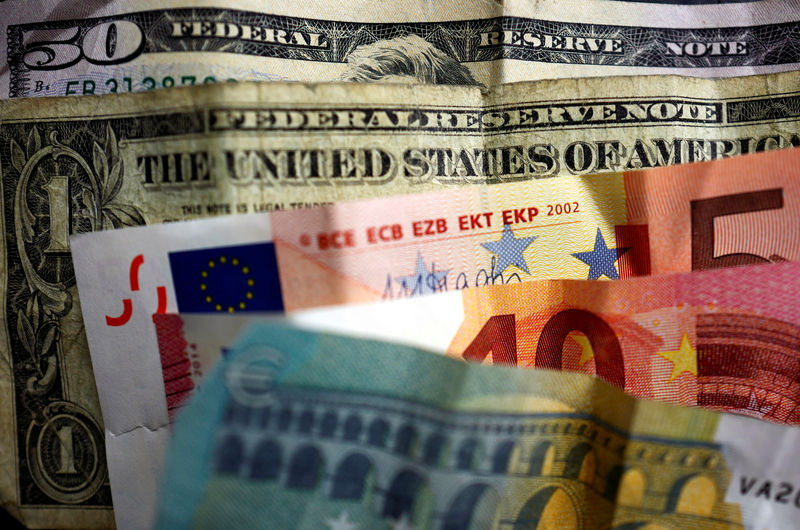 © Reuters.
© Reuters.
Investing.com - The U.S. dollar edged lower Thursday after weak employment data resulted in a moderation in U.S. Treasury yields, while the euro gained despite the weak economic outlook.
At 03:40 ET (07:40 GMT), the Dollar Index, which tracks the greenback against a basket of six other currencies, traded 0.1% lower at 106.442, just lower than its recent near 11-month high.
Weak private payrolls weigh on dollar
Data released Wednesday showed that U.S. private payrolls increased far less than expected in September, suggesting that the country’s labor market was cooling.
This raised doubts that the Federal Reserve would be inclined to hike interest rates again this year, prompting U.S. Treasury yields to ease from 16-year highs.
The dollar had seen recent strong support, boosted by a relentless run of strong U.S. data, on the back of the hawkish tone from the last Federal Reserve meeting, which suggested the U.S. central bank would keep interest rates higher for longer.
That said, “any tentative dollar correction is not finding too many followers. The swing in rate advantage after the recent bond sell-off makes the dollar a very hard sell, and cautious trading ahead of U.S. payrolls tomorrow shouldn’t help,” said analysts at ING, in a note.
Euro struggles with EU economic weakness
EUR/USD rose 0.1% to 1.0509, above this week's fresh low of 1.0448, helped by the dollar weakness.
That said, these gains could well be temporary as the eurozone economic outlook remains weak.
German exports fell more than expected in August, dropping 1.2% from the previous month, data showed on Thursday, as weak global demand hurt the country's exports.
Data released Wednesday showed eurozone retail sales fell 1.2% in August, while the final composite Purchasing Managers' Index indicated that the eurozone economy probably shrank last quarter, making a recession in the second half of the year more likely.
“The dollar remains an expensive sell, and there simply isn’t a compelling story in the eurozone to counter the U.S. exceptionalism narrative,” ING added.
Yen gains after topping 150
USD/JPY dropped 0.1% to 148.99, with the Japanese yen helped by the drop in U.S. yields, after climbing above 150 earlier this week, its weakest since October 2022.
Finance Minister Shunichi Suzuki on Wednesday declined to comment on whether the authorities had intervened to support the yen, and repeated that currency rates must move stably reflecting fundamentals.
Elsewhere, GBP/USD edged higher to 1.2132, steadying from Wednesday's low of 1.2038, AUD/USD rose 0.3% to 0.6343, while USD/CNY traded largely unchanged at 7.3015.

